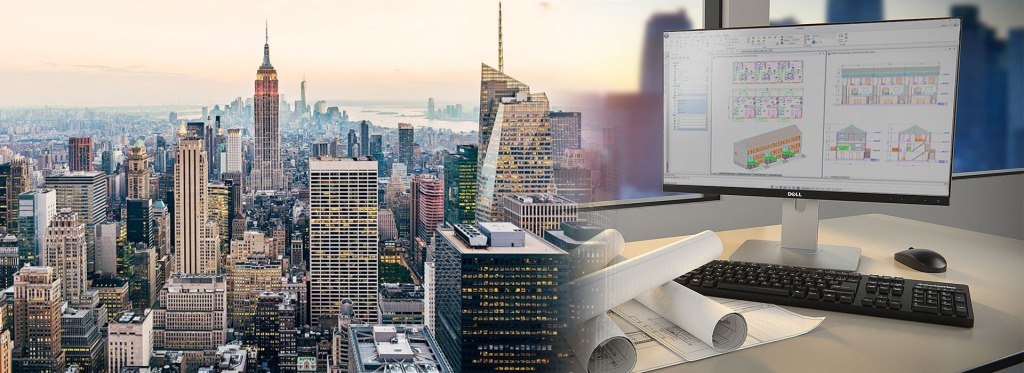Challenges and opportunities of incorporating emerging technologies into architectural CAD drawings and drafting

Introduction
Architectural engineering is the application of engineering principles and technology to the design, construction, and operation of buildings and other structures. It is a multidisciplinary field that involves architecture, civil engineering, mechanical engineering, electrical engineering, and other specialties. Emerging technologies are rapidly changing the landscape of architectural engineering, providing new tools and methods to improve efficiency, productivity, sustainability, and collaboration. This article explores the impact of emerging technologies on architectural engineering and how they will shape its future.
The impact of emerging technologies on architectural engineering
Emerging technologies such as robotics and automation augmented and virtual reality, and building information modeling (BIM) significantly impact architectural engineering. Robotics and automation streamline construction processes, reduce costs, and improve safety. For example, autonomous drones can survey construction sites and gather data for creating detailed 3D models, while robots can prefabricate building components with greater accuracy and speed. However, using robotics and automation also raises concerns about the displacement of human labor and the potential for errors in complex tasks.
Augmented and virtual reality revolutionize how architects and engineers design and visualize buildings. They allow designers to create realistic, immersive environments that can be explored in 3D, providing a better understanding of space, lighting, materials, and other factors. Virtual reality can also be used for virtual site inspections, allowing remote teams to collaborate and review designs in real time. However, using augmented and virtual reality requires specialized equipment and software, which can be costly and time-consuming.
Building information modeling (BIM) is a digital tool that allows architects, engineers, contractors, and owners to collaborate on a project from conception to operation. It provides a comprehensive project information database, including drawings, specifications, schedules, costs, and performance data. BIM allows teams to identify and resolve issues before construction begins, reducing errors and rework. In addition, BIM facilitates sustainability by analyzing and optimizing building performance, such as energy consumption and indoor air quality. However, implementing BIM requires a significant investment in technology, training, and stakeholder coordination.
How will emerging technologies shape the future of architectural engineering services?
Integrating emerging technologies into architectural engineering will continue to improve efficiency, productivity, sustainability, and collaboration. Increased use of robotics and automation will reduce labor costs and increase accuracy, while augmented and virtual reality will enhance the design process and improve stakeholder communication. BIM will become more widely adopted, enabling better decision-making and reducing waste. These technologies will also help new design possibilities, such as 3D printing and intelligent materials.
Sustainable design and construction will become increasingly important as the world seeks to address the challenges of climate change and resource depletion. Emerging technologies such as green building materials, energy-efficient systems, and renewable energy sources will be incorporated into buildings and infrastructure. This will require new design, construction, operation approaches, and collaboration with other disciplines, such as environmental science and policy.
Collaborative design and construction will be facilitated by emerging technologies that enable real-time communication, data sharing, and coordination among teams. Cloud-based platforms, mobile apps, and collaborative software will allow stakeholders to work together regardless of location or time zone. This will lead to more efficient workflows, faster decision-making, and better project outcomes.
Challenges and opportunities of incorporating emerging technologies into architectural CAD drawings and drafting
The adoption of emerging technologies in architectural engineering presents both challenges and opportunities. The costs of new technologies can be high, especially for small and medium-sized firms. Training and education are also required to ensure teams have the skills and knowledge to use the technologies effectively. Ethical considerations such as privacy, data security, and social responsibility must also be considered. However, the opportunities for incorporating emerging technologies into architectural engineering are significant. They offer the potential for greater efficiency, productivity, and sustainability, as well as new design possibilities and improved collaboration. Using emerging technologies can also provide a competitive advantage for firms willing to invest in them. As technologies continue to evolve, it will be essential for architectural engineering firms to stay up-to-date on the latest trends and developments.
In conclusion, emerging technologies are transforming the field of architectural engineering, providing new tools and methods to improve efficiency, productivity, sustainability, and collaboration. Robotics and automation, augmented and virtual reality, and building information modeling are already significantly impacting the industry and will continue to shape its future. However, adopting these technologies presents challenges, such as costs, training, and ethical considerations. Therefore, architectural engineering firms must stay informed about emerging technologies and their potential impact to remain competitive and provide their clients with the best possible service.
Silicon Engineering Consultants LLC is a leading architectural consultant offering Architectural drafting and detailing services to the AEC industry of the USA. We effectuate pragmatic solutions for all your complex architectural requirements. We have over 15+ years of experience serving the AEC industry. We help our clients realize their dream into reality expeditiously and affordably.
Great article! The impact of emerging technologies on architectural engineering is truly remarkable. The integration of robotics, automation, augmented and virtual reality, and building information modeling (BIM) is revolutionizing the industry. These technologies improve efficiency, productivity, sustainability, and collaboration.
Check our new blog list on CAD process – CAD Blog
LikeLike